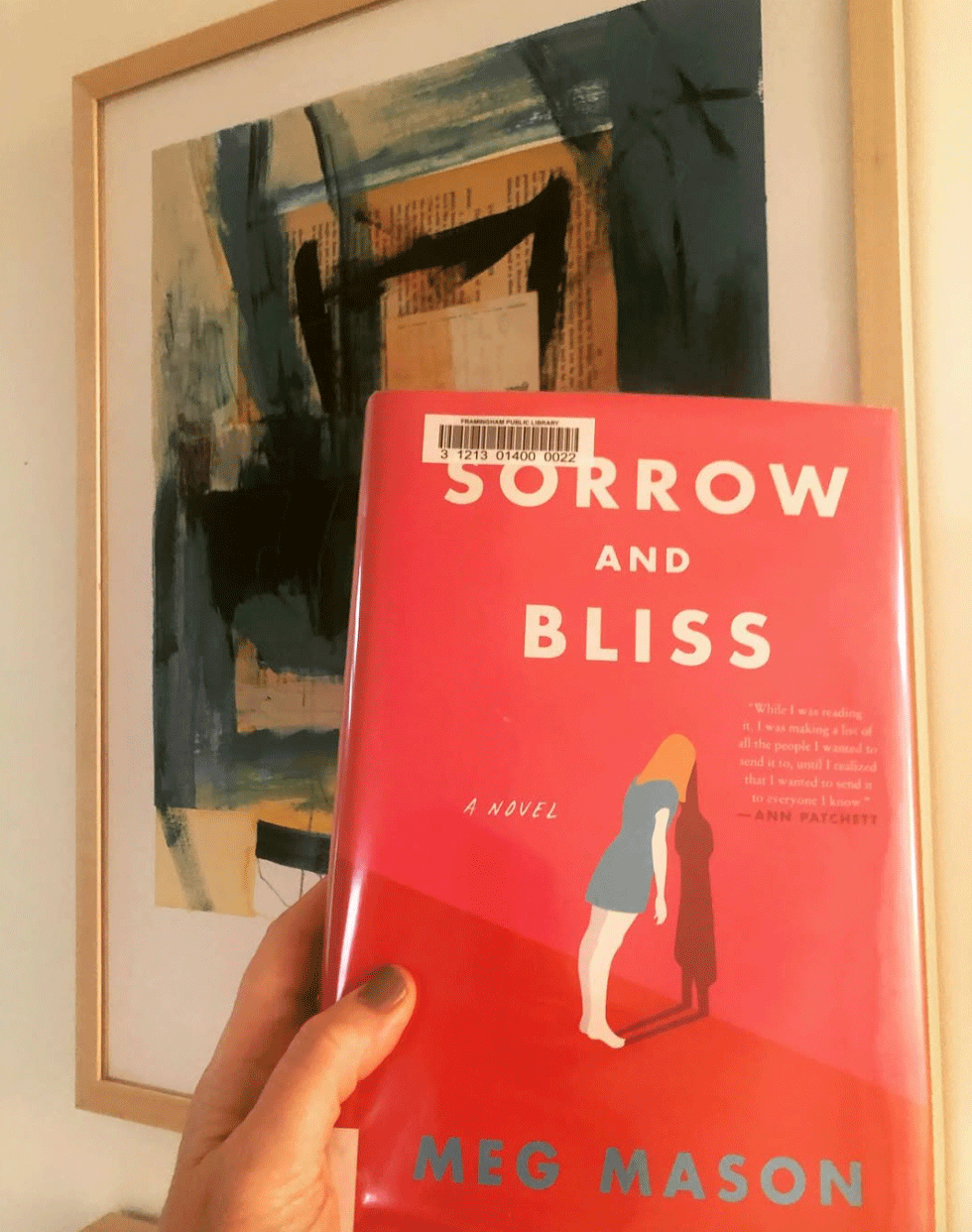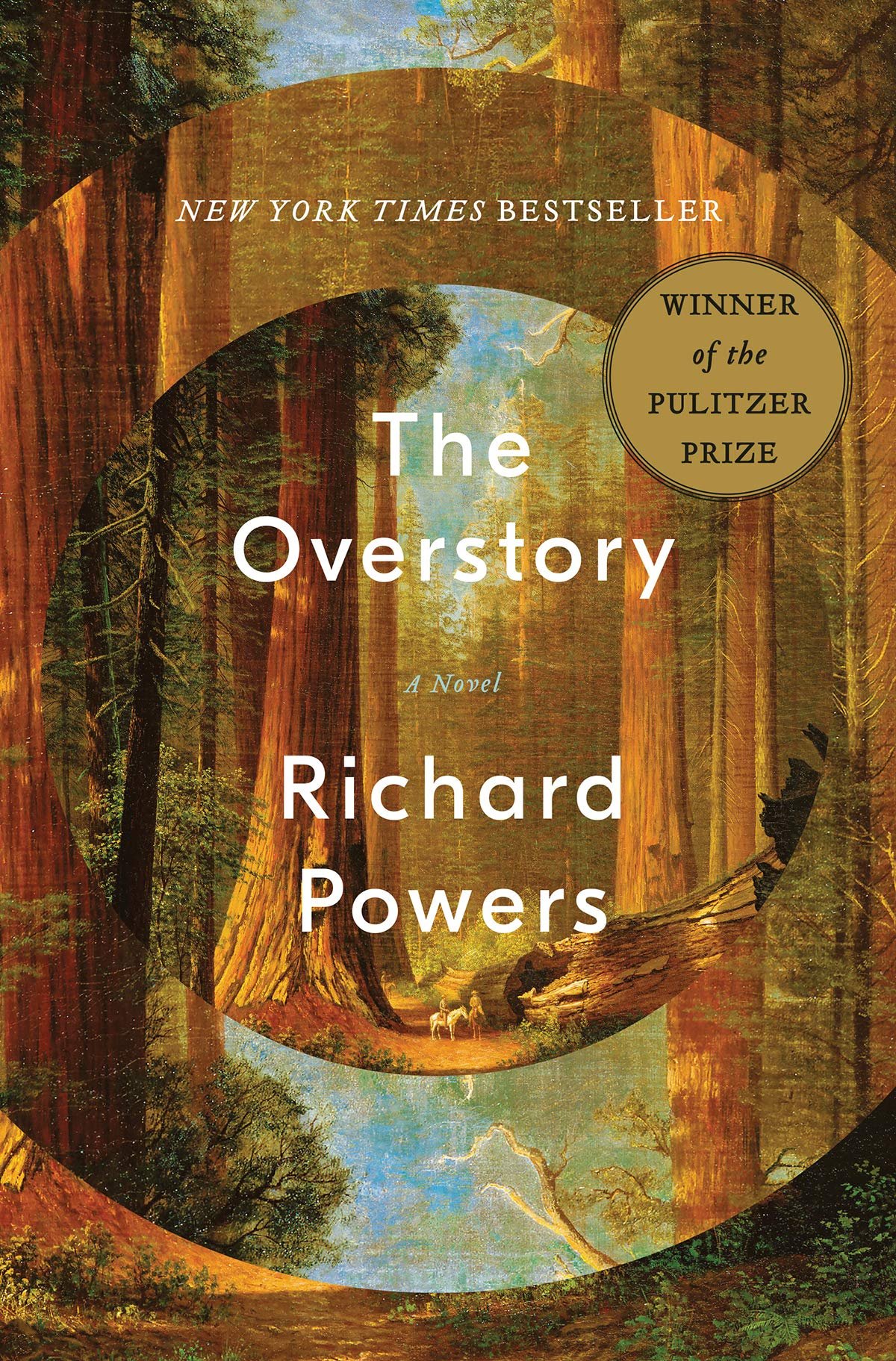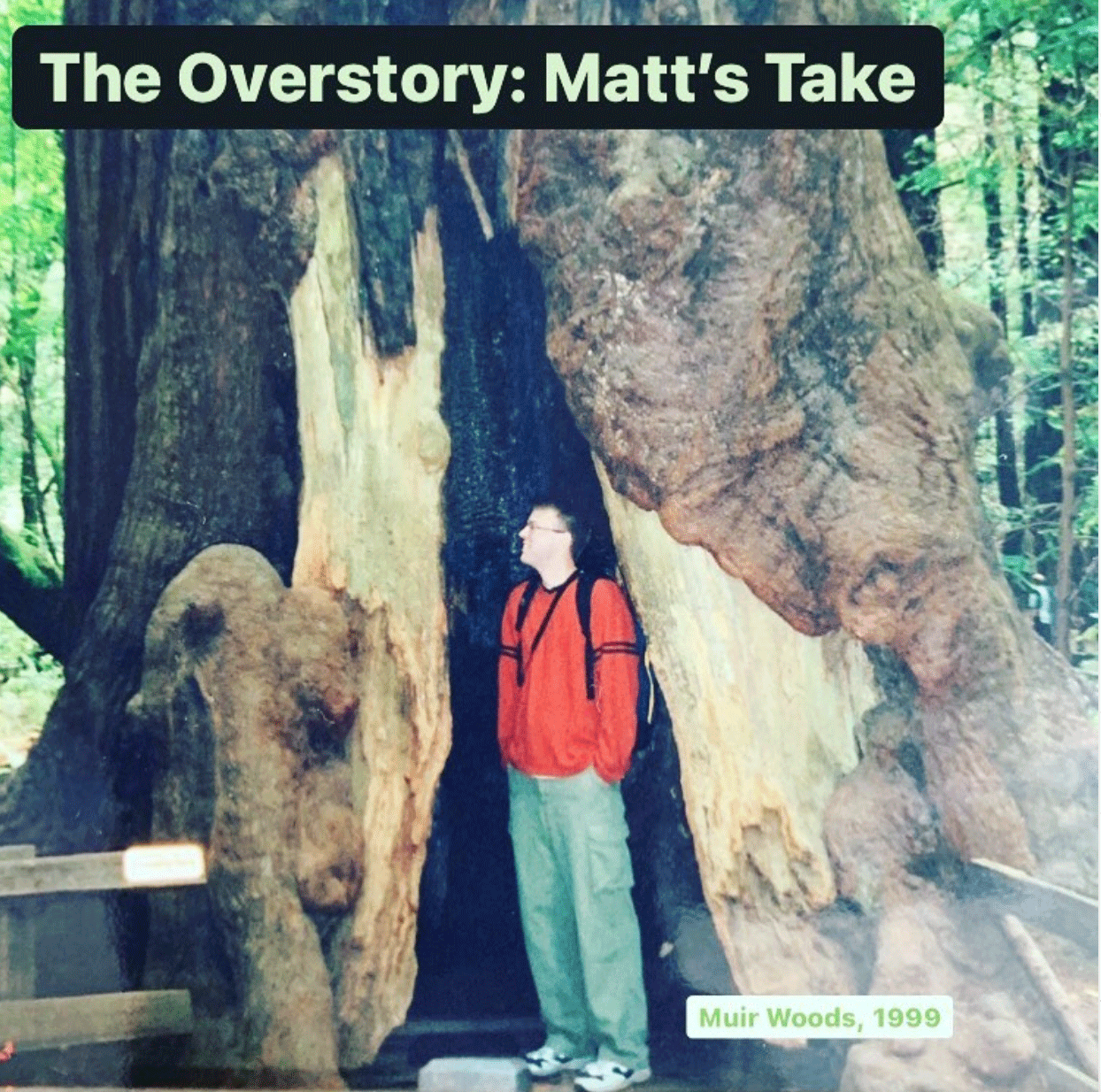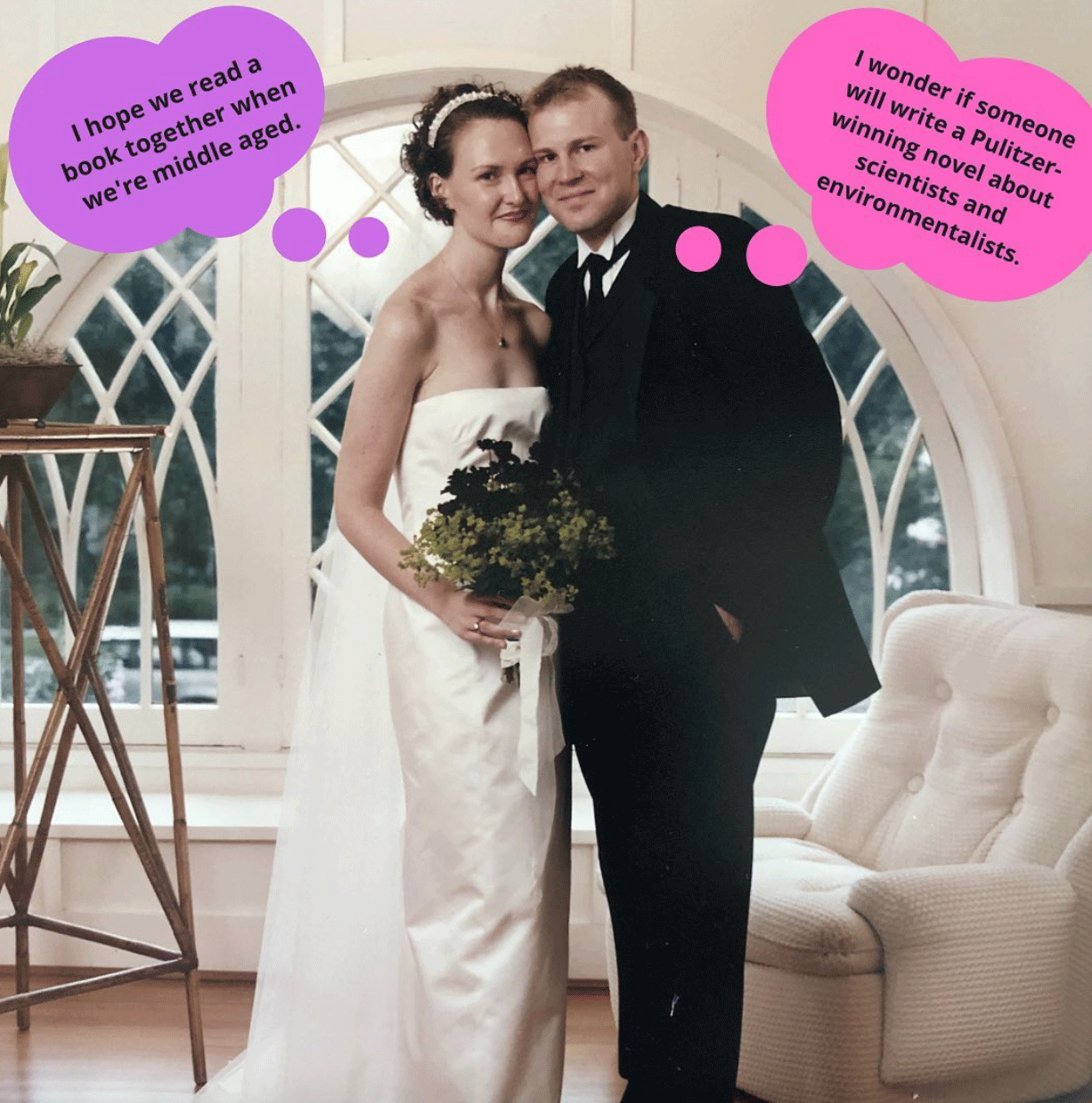
READ ALL ABOUT IT
Since 2012, I’ve been writing about books. And the act of reading. And the importance of story and narrative. But, mostly, the underlying theme of all I write is how taking a moment to stop and digest some longform text — instead of scrolling, instead of watching a video, instead of multitasking — can be one of the most grounding things we can do for ourselves. Here’s the one-stop online home for all this writing.
You can read more about me and my work by moseying over here. Want to peruse periodic “essay drops” — excerpts from my work-in-progress essay collection about Homesickness? Here ya go.

Sorrow and Bliss
Planning on tearing through Sorrow and Bliss by Meg Mason this weekend.

If You Kept a Record of Sins
This is a beautiful book.

Apeirogon
In college I took an art history class – for fun, I guess, since I don’t think it fulfilled any requirement. I traipsed over to the Museum of Fine Arts one Saturday with my friend Keith because I had to write a paper on Rothko. I did, and I managed to make it a 10-page paper. Not a BS paper, which I’m sure some would like to think. No, it was actually a magnificent afternoon at the MFA as Keith and I spent about an hour talking about just one solitary painting because nothing in this artist’s work is straightforward, despite surface simplicity. Rothko is tricky like that.

Buying Novels in Our Pajamas
The Sudbury Town Crier
Independent Bookstore Day is always the last Saturday in April. (A good reason to get out of our pajamas, yes?)

Pillow Platitudes: On The Overstory by Richard Powers & Instagram Influencers
The New York Times recently published an interesting Opinion piece called “The Empty Religions of Instagram: How did influencers become our moral authorities?” Well, I focused straight away because the type of influencers that this piece discusses – namely, Glennon Doyle – is my kryptonite. I, a middle-aged white mom, fall squarely in Glennon’s target demographic, yet my fascination with her and her ilk is more of the sideshow variety. This category mostly doesn’t appeal to me – and the questioning cycle of “why does this not appeal to me?” of course makes me feel completely out of sync with my peers – but it’s interesting watching her peddle self-help-with-an-edge while everyone seems to fall into lockstep. If I get too far down this rabbit hole, I (and my heart), get stuck in a cycle of cynicism.

RAWTS: Amy’s Take on The Overstory
Well, I cried.

RAWTS: Matt’s Take on The Overstory
The Overstory is a book about trees...an incredibly beautiful & well-researched book that weaves plant science through everything, painting the background for the individual narratives driving the plot line as well as being the plot itself. The book follows the lives of numerous characters—scientists, professors, engineers, lawyers, etc—and how their lives intersect, mostly related to some interest in trees.

Valentine’s is for Readers
Matt and I are two months into our “let’s read a book together” experiment.

Libraries: Not Just for (Book) Lovers
The Sudbury Town Crier
For Library Lovers’ Month, a heart-shaped letter to all the libraries I’ve loved before.

The Years
Well, The Years by Annie Ernaux is a beautiful and thoughtful book that I nonetheless found very melancholy. “Pensive Amy” made her debut in January and might not go away until the snow does.

News of the World
Are we participants in the world, or just readers of it?

In the Dream House
Memoirs: I typically don’t read them, but I just finished one. Introducing…In the Dream House by Carmen Maria Machado. (Introduction probably not needed for many of you bibliophiles.)

Labrador
When my brother and I have been back in our hometown together – which has happened, oh, maybe twice since our parents moved in 1995 – we say “This/that is so…weird” over and over. Which is, well, weird because there is nothing “weird” about where we’re from. (In fact, it’s kind of amazing!) What we are trying to articulate – albeit very poorly – is that nostalgia is a strange bugger. How does one make sense of one’s childhood memories? Not the concrete ones, but the “feelings” of: how your elementary school was or what it was like to take swim lessons. And the people, of course. Remember Mr. X? What about that family from Sweden who lived in the house across the street for 9 months? All those kids beaming from a class photo? You know how it goes. A stew of moments.

A Little More Human
A long time ago, my husband worked with someone who introduced him to the book The Singularity is Near: When Humans Transcend Biology by Ray Kurzweil. At the time it felt wild (sort of like how Tom Cruise pawing at his invisible swipe screen in Minority Report seemed ca-razy), but now a novel like A Little More Human, by Fiona Maazel (and published in 2017), doesn’t seem all that far-fetched. This book is part literary fiction and part…speculative fiction?

RAWTS: We Chose The Overstory
Awww, it’s His and Her copies of The Overstory. Thank you to those who played along with my husband Matt’s big “resolution” for 2021!

RAWTS: How It Began
Hi. I’m Amy’s husband, Matt. She says nice things about me here, but she rarely speaks of the dirty family secret: I don’t read.

Mirror, Shoulder, Signal
Mirror, Shoulder, Signal by Danish writer Dorthe Nors. File under: Scandinavian literature can needle human emotion in a spectacular fashion – probably because it does so in an almost-but-not-quite dull manner. (One of the best books I’ve ever read is The Faster I Walk, the Smaller I Am by Norwegian author Kjersti Skomsvold.) I checked out the (few) 1-star reviews of this book after finishing, and as I predicted, they declared it “slow” and “meandering.” Well, I guess I’m a one-star gal because that’s what makes the novel work.

A Children’s Bible
My experience with A Children’s Bible pretty much blew my mind. I spent about two-thirds of it hating it/being annoyed by self-absorbed parents willingly unaware of their elite privilege while they drink to oblivion, ignore their children, and swirl around the propped-up world they’ve created full of others like them. To their children, these adults are amorphous and interchangeable and “a cautionary tale.” One child totes around an illustrated children’s Bible which sets the allegorical tone of this novel. One’s not reading A Children’s Bible as a straight-up, literal text – the parents’ debauchery and the children’s ability to completely fend for themselves will give that away. (As will the natural disasters.) So I suppose this Pulitzer finalist tiptoes into “dystopian” territory, which is not really my kind of book.

To Be or Not To Be (Yourself): On The Vanishing Half, The Glass Hotel, and Shakespeare
In a moment of delusion in late 2018, I decided to commit to reading one Shakespeare play per month in 2019. And I mostly kept the goal. (The only one I didn’t finish was Much Ado About Nothing in December.) I had already read many of these in college, and even though I was wholly tired of the Bard by the time 2020 rolled around, the plays still felt fresh. I thought King Lear raw and relevant, Hamlet heartbreaking. Twelfth Night made me sad in a “Mean Girls” kind of way.

Want
This year I tried to tussle with my “I don’t like it, but maybe I like it” stance toward “popular books.” (In fact, I’m currently writing a blog post about The Vanishing Half [very popular] and The Glass Hotel [normal, somewhat understated popular].) Want by Lynn Steger Strong – which, by the way, was named a top book of 2020 by NPR and was also included in The New Yorker’s ‘Best Books We Read in 2020’ [but does that mean it’s ‘popular’?] – provides an excellent framework for this loop-de-loop thinking.

